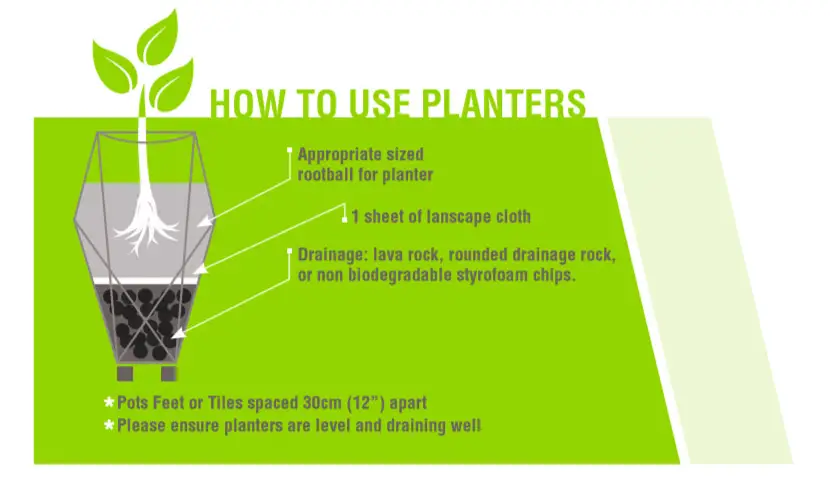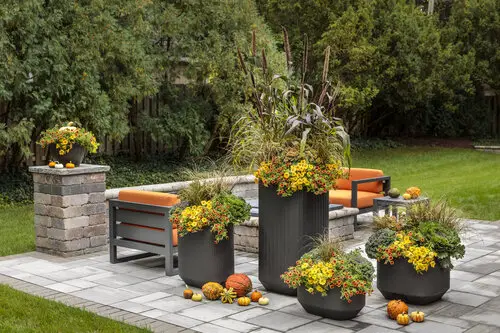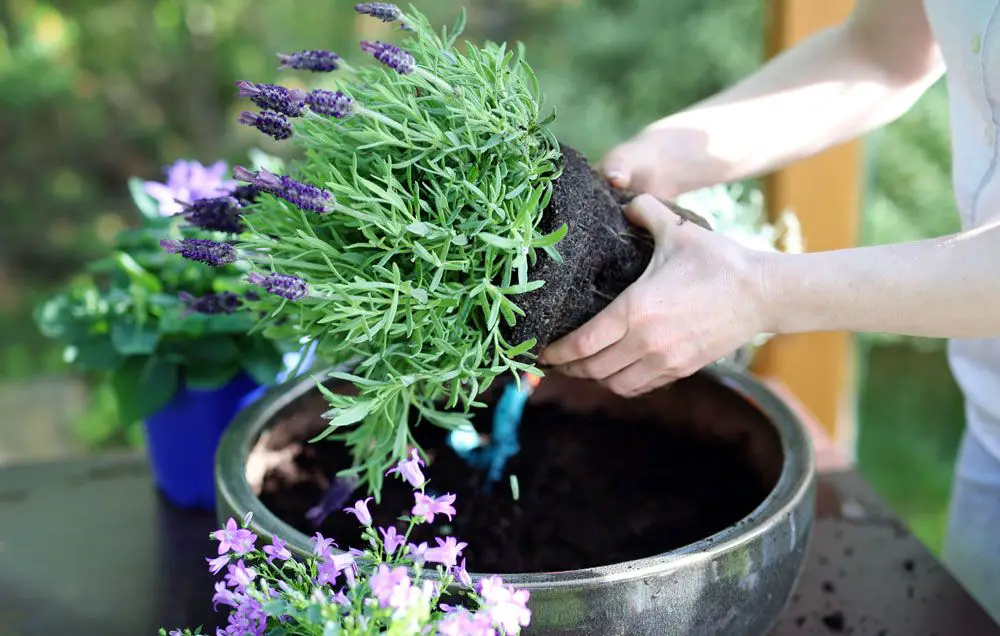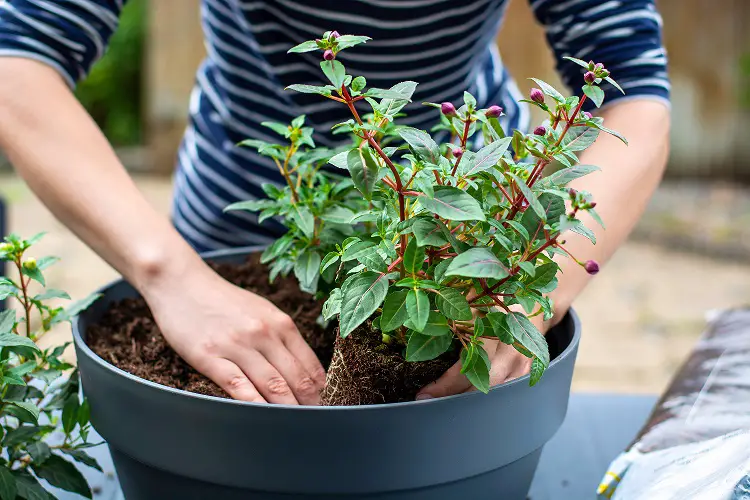This post may contain affiliate links which means I may receive a commission for purchases made through links. Learn more on my Private Policy page.
So you’ve decided to bring some greenery into your space and invest in a planter. But now you might be wondering, what are the best practices for actually using a planter? Whether you’re a seasoned gardener or a beginner, this article will provide you with essential tips and tricks to ensure that your plants thrive in their new home. From choosing the right potting soil to proper watering techniques, we’ve got you covered. So let’s dig in and discover how to make the most out of your planter and create a beautiful and healthy environment for your beloved plants.
Choosing the Right Planter
When it comes to selecting the right planter, there are a few key factors to consider. One of the most important considerations is the material of the planter. Different materials, such as ceramic, plastic, or clay, each have their own advantages and disadvantages. Ceramic planters are durable and provide excellent insulation for plants, while plastic planters are lightweight and easy to move around. Clay planters provide good drainage but can be more prone to cracking.
Another important factor to consider when choosing a planter is the size. The size of the planter will depend on the type of plants you intend to grow and the available space you have. It’s crucial to choose a planter that is large enough to accommodate the root system of your plants and allow them to grow properly. In general, it’s better to go with a larger planter rather than one that is too small, as plants need room to spread out and establish a healthy root system.
Lastly, evaluating the drainage system of a planter is essential. Proper drainage is crucial for the health of your plants, as it helps prevent waterlogging and root rot. Look for planters that have drainage holes at the bottom to allow excess water to escape. If the planter you choose doesn’t have drainage holes, you may need to create them yourself or use alternative methods, such as a layer of gravel at the bottom to facilitate drainage.
Preparing the Planter
Before planting your chosen vegetation, it’s important to properly prepare the planter to create a healthy environment for your plants to thrive. One of the first steps in preparing a planter is to clean it thoroughly. This will help remove any dirt, debris, or potential contaminants that could harm your plants. Simply use a mild detergent or soap and water to wash the planter, ensuring that all surfaces are cleaned properly.
After cleaning the planter, it’s essential to add drainage material to the bottom. This will help promote proper water drainage and prevent water from pooling at the bottom, which can lead to root rot. You can use materials such as small stones, broken pottery pieces, or even a layer of plastic mesh to create a barrier between the soil and the drainage holes.
Once the drainage material is added, it’s time to fill the planter with a suitable potting mix. Potting mix is specifically formulated to provide the necessary nutrients and drainage for potted plants. It’s important to choose a high-quality potting mix that is appropriate for the types of plants you will be growing. Fill the planter with potting mix, leaving enough space at the top to allow for watering and settling.

This image is property of www.thespruce.com.
Selecting the Right Plants
Choosing the right plants for your planter is crucial for their overall growth and success. One important consideration when selecting plants is their sunlight requirements. Some plants thrive in full sun, while others prefer partial or even full shade. Take into account the amount of sunlight your planter receives throughout the day and choose plants that are suitable for that light level.
In addition to sunlight requirements, it’s important to consider the specific types of plants that are suitable for a planter. Some plants, such as herbs or small vegetables, are well-suited for container gardening due to their compact size and shallow root systems. Other plants, like larger shrubs or trees, may not be suitable for long-term growth in a planter.
Another factor to consider is the soil pH. The soil pH can greatly affect the growth and health of plants. Different plants have different pH preferences, so it’s important to choose plants that are compatible with the pH of the potting mix used in the planter. You can measure the pH of your soil using a pH testing kit, and then choose plants accordingly.
Planting Techniques
Once you have chosen the right plants for your planter, it’s important to use proper planting techniques to ensure their successful growth. One important aspect of planting is to determine the proper planting depth for each plant. The planting depth will vary depending on the type of plant, so it’s important to refer to the specific planting instructions for each variety. Planting too deep or too shallow can hamper the plant’s ability to establish roots and grow properly.
Another aspect of planting is spacing the plants appropriately. Crowding plants too closely together can lead to competition for resources, such as nutrients and water. This can stunt the growth of your plants and make them more susceptible to disease and pests. Be sure to follow the recommended spacing guidelines for each plant, giving them enough room to grow and thrive.
Properly watering newly planted seedlings is also crucial for their survival and establishment. After planting, give the plants a thorough watering to settle the soil and promote root growth. Ensure that the water is evenly distributed throughout the planter, and monitor the moisture levels in the soil regularly. Avoid overwatering, as this can lead to root rot, but also make sure the plants do not become dehydrated by watering them when the soil feels dry to the touch.

This image is property of www.atlaspots.com.
Watering and Maintenance
Once your plants are established, proper watering and maintenance are crucial to their ongoing health and growth. One important aspect of plant care is to monitor the soil moisture regularly. This can be done by inserting your finger into the soil to check its moisture level. Different plants have different moisture requirements, so it’s important to adjust your watering schedule accordingly.
The frequency of watering will vary depending on factors such as the type of plant, the size of the planter, and the weather conditions. In general, it’s better to water deeply and less frequently rather than giving your plants frequent shallow watering. This encourages the roots to grow deep into the soil and promotes healthier plants. Remember to water the plants early in the day to allow any excess moisture to evaporate, reducing the risk of fungal diseases.
Fertilizer application is another important aspect of plant care. In addition to the nutrients provided by the potting mix, plants in containers often require additional fertilization. Choose a balanced, slow-release fertilizer and follow the manufacturer’s instructions for application. Be careful not to over-fertilize, as this can lead to fertilizer burn and damage the plants. It’s also important to be aware of any specific nutrient deficiencies that may be common for the plants you are growing and address them accordingly.
Dealing with Pests and Diseases
Unfortunately, pests and diseases can sometimes become an issue when growing plants in containers. It’s important to be able to identify common plant pests and take steps to prevent their infestations. Common pests such as aphids, mealybugs, or spider mites can be controlled through methods like regular monitoring, handpicking, or using organic sprays.
Prevention is key in managing pests, so it’s important to create an environment that is not conducive to pest infestations. This can be achieved by practicing good hygiene, keeping the planter and surrounding area clean, and removing any dead or decaying plant material promptly. Introducing beneficial insects, such as ladybugs, can also help control pest populations naturally.
While prevention is important, it’s also crucial to know and implement control measures for common plant diseases. Diseases such as powdery mildew, root rot, or fungal infections can have detrimental effects on your plants. Regularly inspect your plants for any signs of disease, such as discolored leaves, wilting, or unusual growth. If a disease is detected, it’s important to act quickly and isolate the affected plant, remove any infected parts, and treat with appropriate fungicides or other control measures.

This image is property of www.provenwinners.com.
Annual Planter Maintenance
Annual maintenance is necessary to keep your planters in good condition and ensure the healthy growth of your plants. One important aspect of annual maintenance is to clean and disinfect the planter on a regular basis. This helps remove any potential pathogens or accumulated salts from the potting mix. Cleaning the planter also helps remove any debris or old plant material that may harbor pests or diseases.
Replacing the potting soil regularly is also important to maintain the fertility and health of your plants. Over time, the potting mix can become compacted and depleted of nutrients. Replace a portion of the potting mix or completely refresh it every growing season to ensure optimal plant growth. Just be sure to remove any old roots, debris, or pests before adding fresh potting mix.
Additionally, it’s important to inspect your planters for any signs of damage or wear. Cracks or broken parts can compromise the structural integrity of the planter and lead to issues such as water leakage or nutrient deficiency. If any damage is found, repair or replace the planter as necessary to prevent any long-term problems.
Seasonal Planter Decorations
A planter can be more than just a container for your plants; it can also be a decorative element that adds beauty and flair to your outdoor or indoor space. When it comes to seasonal planter decorations, there are a few key considerations to keep in mind.
Choosing seasonal flowers and foliage is a great way to bring color and vibrancy to your planters. Consider the specific season and climate in your area when selecting plants. For example, in the spring, you might opt for tulips or daffodils, while in the fall, you could choose chrysanthemums or ornamental cabbage. Be sure to select plants that have similar light and water requirements to ensure their successful growth.
Adding decorative elements to your planters can further enhance their visual appeal. This can include items such as decorative stones, colored mulch, or even small garden ornaments. Be creative and choose elements that complement the overall aesthetic of your space while still allowing your plants to be the focal point.
Consider color combinations when selecting plants and decorative elements. Think about color theory and how different colors can create various moods or atmospheres. Harmonious color schemes, such as analogous colors, can create a sense of calm and cohesiveness, while complementary colors can create a vibrant and energetic look. Experiment with different combinations to find what works best for your personal style and preferences.

This image is property of hips.hearstapps.com.
Harvesting from Planters
One of the joys of growing plants in containers is the ability to enjoy fresh produce or herbs right from your own planter. Proper harvesting techniques can ensure that you get the most out of your plants while allowing them to continue growing and producing.
Knowing the proper harvest times for your specific plants is crucial. Each plant has its own ideal time for harvesting, whether it’s when the fruits are fully ripened or the herb leaves are at their peak flavor. Refer to planting instructions or gardening resources to determine the best time to harvest your plants. Harvesting too early or too late can affect the taste and quality of the produce.
Correct harvest techniques are also important to prevent any damage to the plants or the surrounding foliage. Use sharp and clean gardening shears or scissors to make clean cuts and avoid tearing the plant. Harvesting herbs, for example, typically involves cutting above a node or leaf joint to encourage branching and continued growth.
To maximize the yield from your plants, it’s important to practice proper plant care throughout their growing season. This includes providing adequate sunlight, water, and nutrition, as well as regular pruning and removing any dead or diseased parts. Healthy and well-cared-for plants will produce higher yields and better-quality produce.
Long-term Plant Care
Proper long-term care is essential to maintain the health and longevity of your plants in containers. Trimming and pruning play a crucial role in shaping and maintaining the size and appearance of your plants. Regularly remove any dead, damaged, or overgrown branches to promote healthy growth and prevent the spread of diseases.
Re-potting is necessary when your plants outgrow their current containers or when the potting mix becomes depleted. Inspect the roots periodically and look for signs of overcrowding or root-bound plants. If necessary, gently remove the plant from its current planter, trim the roots if needed, and plant it in a larger container with fresh potting mix.
Dividing and propagating plants can also be done to create new plants from existing ones. Many plants can be divided by gently separating the clumps of roots and replanting them in separate containers. Propagation through cuttings, layering, or even seeds can also be done to create new plants. Follow specific instructions for each plant type to ensure successful division and propagation.
Remember, as your plants grow and evolve, their care needs may change. Be attentive to their specific requirements, adjust your maintenance routines as needed, and enjoy the journey of nurturing your plants to their full potential.
In conclusion, using a planter can be a rewarding and enjoyable way to grow plants, whether you have limited space or simply want to enhance your surroundings. By choosing the right planter, preparing it properly, selecting appropriate plants, and following best practices for planting, watering, and maintenance, you can create a thriving and beautiful container garden. Keeping an eye out for pests and diseases, performing annual maintenance, adding seasonal decorations, and maximizing your harvest will further enhance your gardening experience. With proper long-term care, your plants will continue to bring joy and beauty to your home or outdoor space for years to come.

This image is property of cdn11.bigcommerce.com.
This post may contain affiliate links which means I may receive a commission for purchases made through links. Learn more on my Private Policy page.

